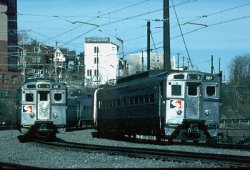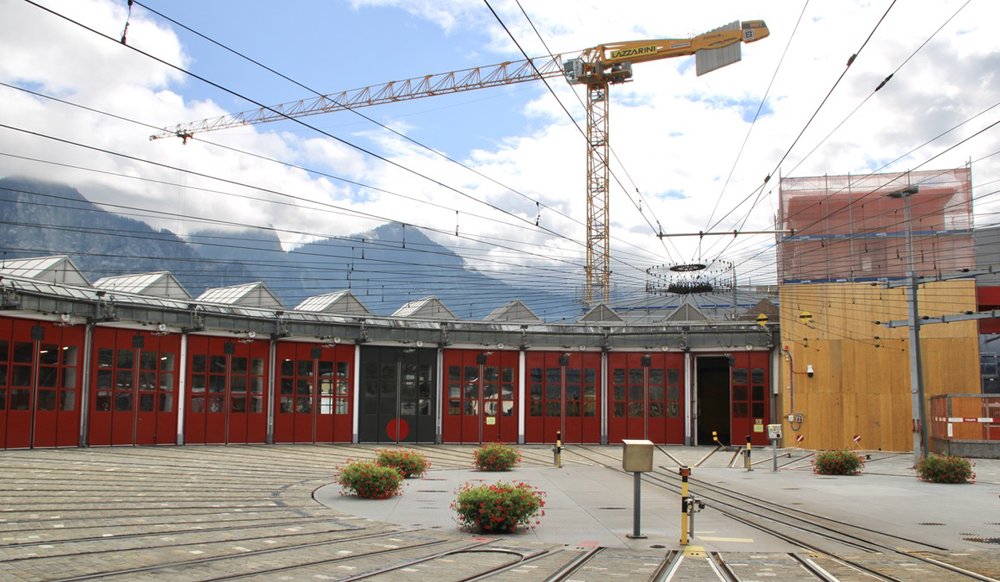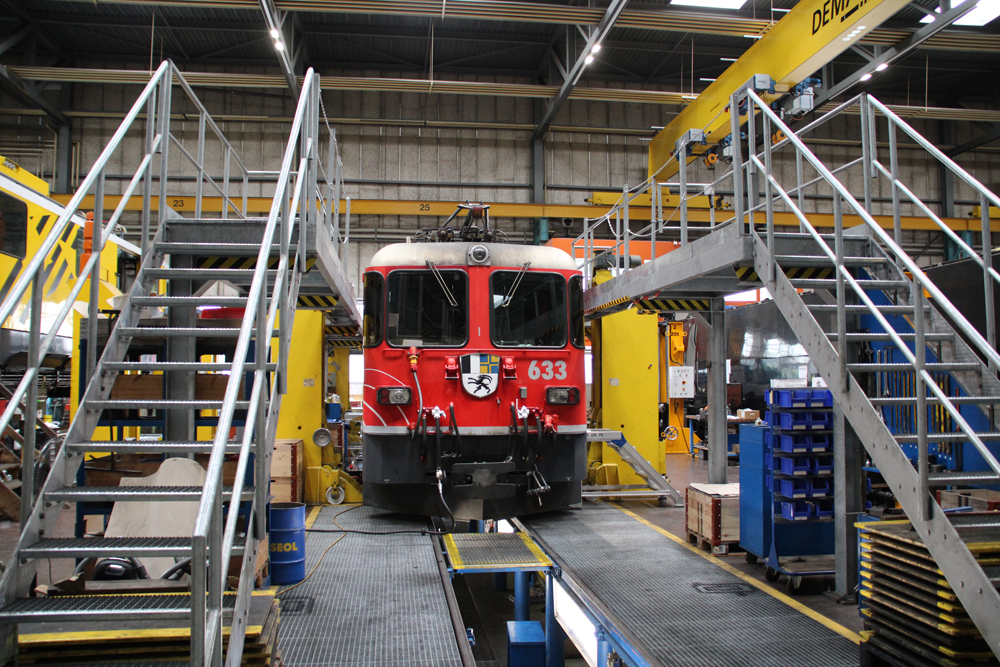SEPTA’s commuter rail service is operated as its Regional Rail Division. From Center City Philadelphia, trains fan out on 13 routes, covering 223 miles and serving 155 stations in Philadelphia, Bucks, Chester, Delaware, and Montgomery counties, as well as the neighboring states of New Jersey and Delaware. Ridership on SEPTA’s regional rail lines averaged 99,000 trips per day in 2000, with a total of 26.9 million trips recorded for the year.
Historically, the Pennsylvania Railroad and the Reading Railroad each developed vast, independent commuter rail networks. Their trains terminated at busy stations just a few blocks apart in Center City Philadelphia: the Reading Terminal, and Pennsylvania’s below-ground Suburban Station.
SEPTA was created by the State legislature in 1963, an agency financed by the Commonwealth of Pennsylvania charged with developing a cohesive transportation system for the city of Philadelphia and five outlying counties. SEPTA purchased city subway, bus, and trolley routes operated by the Philadelphia Transportation Company in 1968, and those owned by the Philadelphia Suburban Transportation Company (Red Arrow Lines) in 1970.
SEPTA purchased new commuter train equipment in the 1970s, and began subsidizing the suburban passenger services operated by the freight railroads. The April 1976 creation of Conrail brought the Reading and Penn Central (Pennsylvania’s successor) lines under common ownership. As state funding dwindled, services were curtailed. All train service on on-electrified lines was gone by 1982. Conrail divested itself of its northeast commuter operations by the end of 1982, in accordance with the Northeast Rail Service Act of 1981.
On January 1, 1983, SEPTA assumed control of Philadelphia-area commuter rail services. While SEPTA scrambled to piece together labor contracts with 15 rail unions, the trains ran on limited schedules, then were halted altogether during a 108-day strike that began March 15, 1983.
SEPTA is one of only two passenger rail systems in North America that operate exclusively on electric power. (The other is the South Shore in Illinois and Indiana.)
A fleet of 304 electric M.U.s, powered via overhead catenary, forms the backbone of SEPTA’s rolling stock. The cars – nicknamed Silverliners for their fluted stainless steel sides – were built by the Budd Company, St. Louis Car Company, and General Electric in the 1960s and 1970s for the Reading and Penn Central, and have undergone various overhauls since then. In 2006, SEPTA placed an order with Rotem Corp. for 104 “Silverliner V” M.U.s that will be assembled in Philadelphia.
On longer-distance routes, SEPTA also uses push-pull trainsets powered by one ABB Traction ALP44 and seven ASEA-Brown Boveri AEM7 electric locomotives, hauling single-level coaches from Bombardier. In 2000, Penn DOT provided funds for the purchase of additional Bombardier coaches to meet an anticipated increase in service on lines to New Jersey during a reconstruction of Interstate 95.
SEPTA trains run on their own tracks, except for trains operating on ex-Pennsylvania Railroad commuter lines, and the Airport Line, which use portions of Amtrak’s Northeast Corridor or Keystone Corridor for all or part of their routes. In addition, trains on the West Trenton and Fox Chase lines use segments of CSX’s Trenton Line, the former Reading main line between Philadelphia and northern New Jersey.
SEPTA realized a major improvement in operations in November 1984, when it opened the Center City Commuter Tunnel – a four-track, 1.8-mile tunnel beneath Center City Philadelphia. (Conrail had begun the project in 1978.) For the first time, the former Reading and Pennsylvania commuter lines were joined together, allowing better equipment utilization and train scheduling, and providing more travel options for passengers. The tunnel, which cost $325 million, allowed SEPTA trains on ex-Reading routes to operate directly into the previously stub-ended ex-PRR Suburban Station. One casualty of the tunnel’s opening was the cessation of train service beneath the giant trainshed of Reading Terminal, built in 1893. In its place, SEPTA trains began using the newly built Market East station, a four-track underground station with two 868-foot island platforms.
On April 28 1985, SEPTA inaugurated service on its $90 million 5.9-mile Airport High Speed Line to Philadelphia International Airport, the first passenger line on the U.S. railroad network to serve an airport. (Several rapid transit lines had previously built airport links.)
The Delaware Department of Transportation subsidizes SEPTA R2 Line commuter trains that run west of Marcus Hook, Pa., on Amtrak’s Northeast Corridor, to Wilmington and Newark, Del. (Commuter trains had operated to Wilmington and Newark until 1982 after Delaware had cancelled their funding.) SEPTA restored service to Wilmington on January 12, 1989, and extended its reach to Newark on September 2, 1997.
SEPTA trains use the upper level of the two-level 30th Street Station in Philadelphia. There, passengers can make connections to Amtrak Northeast Corridor and Keystone Corridor trains, New Jersey Transit Atlantic City Line trains, the Market-Frankford Subway-Elevated, and subway-surface trolleys. At Market East station in Center City, passengers can connect to the Broad Street Subway, the Market-Frankford Subway-Elevated, and PATCO’s 14.5-mile Lindenwold High-Speed Line to Camden and Lindenwold, N.J. A transfer to the Broad Street Subway can also be made at SEPTA’s Fern Rock station north of Philadelphia.
In SEPTA timetables, certain limited-stop rush-hour trains are given distinguishing names, such as the Neshaminy Limited express train on the West Trenton Line.
- R1 – Airport Line. Trains run every 30 minutes from 6 a.m. to midnight 7 days a week between Center City and Terminals A-E of the Philadelphia International Airport, 9 miles. Intermediate stops are made at Eastwick and University of Pennsylvania.
- R2 – Wilmington/Newark. Daily service to Marcus Hook, Pa.; many trains continue on to Wilmington, Del., Monday-Saturday. Trains to Newark, Del., operate in both directions during weekday rush hours, 37 miles from Center City. Serves 19 stations on weekdays, fewer on weekends. Midday connecting bus service between Newark and Wilmington provided by DART First State on weekdays.
- R3 – Media/Elwyn. Daily service to Elwyn, 15 miles from Center City. Serves 15 stations.
- R5 – Thorndale/Paoli. Frequent daily service to Paoli and Malvern, with service beyond to Thorndale operating Monday-Saturday, 35.3 miles from Center City. Rush-hour express service to/from Thorndale on Limited trains and the Great Valley Flyer. Serves 22 stations, 17 on Sundays and holidays.
- R6 – Cynwyd. Rush-hour and limited midday service to Cynwyd, 6.1 miles from Center City. Serves 3 stations. No service on weekends or holidays.
- R7 – Trenton. Daily service to Trenton, N.J., 33.8 miles from Center City. Serves 12 stations. Trains are timed to permit connections with New Jersey Transit trains at Trenton. Express trains operate during weekday rush hours.
- R8 – Chestnut Hill West. Frequent daily service to Chestnut Hill West, 12.1 miles from Center City. Serves 10 stations.
Ex-Reading lines
- R2 – Warminster. Daily service to Warminster, 20.6 miles from Center City. Serves 13 stations.
- R3 – West Trenton. Daily service to West Trenton, N.J., 33 miles from Center City. Express rush-hour service provided on the Neshaminy Limited and other trains. Serves 18 stations.
- R5 – Lansdale/Doylestown. Daily service to Lansdale and Doylestown, 34.7 miles from Center City. Serves 24 stations.
- R6 – Norristown. Daily service to Elm Street, Norristown, 18.6 miles from Center City. Serves 13 stations. Weekday rush hour express service provided by The Schuylkill Flyer. At the Norristown Transportation Center, passengers can connect to SEPTA’s Norristown High-Speed Line for service through Montgomery County to Philadelphia’s 69th Street Terminal.
- R7 – Chestnut Hill East. Daily service to Chestnut Hill East, 11.3 miles from Center City. Serves 11 stations.
- R8 – Fox Chase. Daily service to Fox Chase, 11.6 miles from Center City. Serves 7 stations.
SEPTA Regional Rail Division
1234 Market Street
Philadelphia, PA 19107
(215) 880-7800
Teletype: (215) 580-7853
www.septa.org














